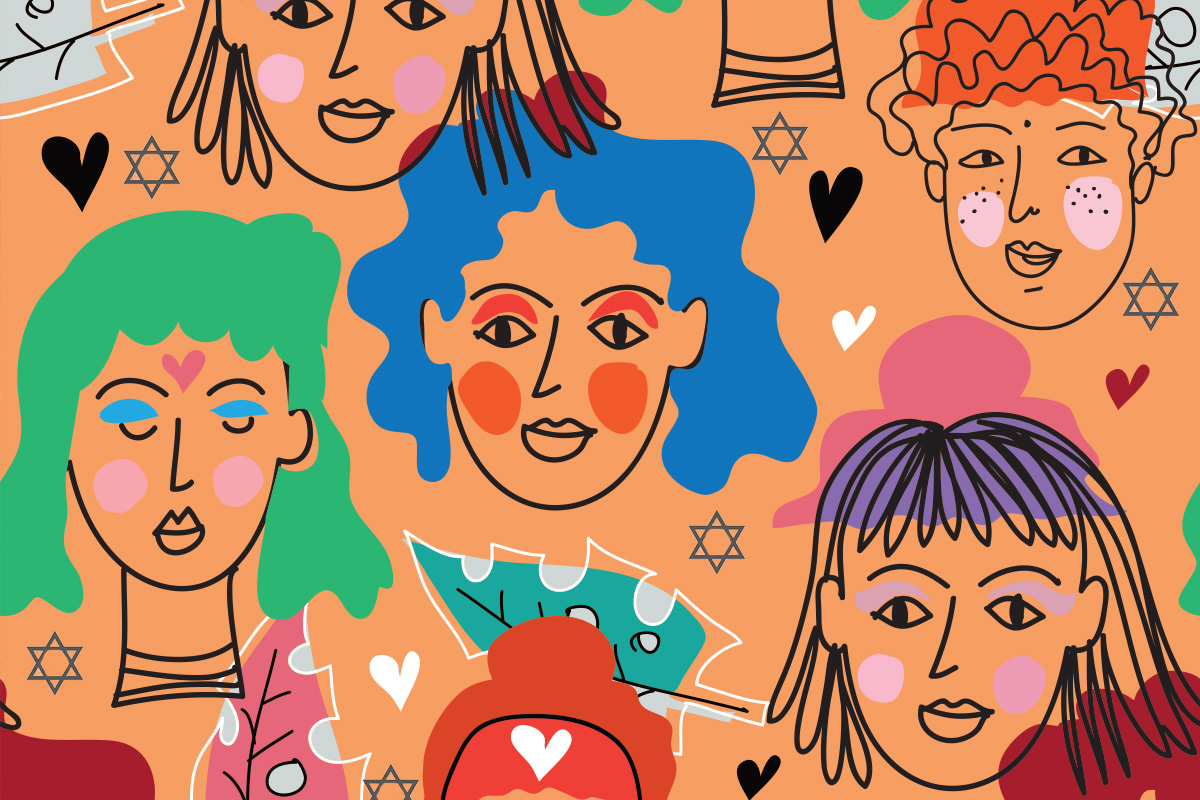As an insecure Jewish teenager scrambling to find your way within the untamed jungle of high school, Jewish youth groups are some kind of paradise. There’s the older members nearly fighting over who will get to drive you home; the free T-shirts, pins, candy, embroidered kippahs and paraphernalia galore that are tossed out like confetti; and the youth-planned events essentially catered to keep you coming back for more.
And for me, it worked, just as planned. Until I recognized that paradise’s fallibility. Specifically, the failure of Jewish youth groups to see beyond a strict gender binary in the sake of keeping its already weakening, outdated traditions alive.
In the Jewish youth group in which I was a devoted member and leader for five years, as in many others, chapters — as well as a large proportion of programs, events, cheers and traditions — are separated decisively and divisively into male and female groups. Boys and girls separate for most chapter events, for example, and, on the night of Havdalah, they form distinct circles to practice their traditional cheers and rituals. In today’s social climate, such organizations crafted on such a strict gender binary are utterly unsustainable and face obsolescence without a clear recognition of the non-binary community and the increasing fluidity of gender identity.
This is not to say that identification based on gender is inherently problematic; in many spheres, such recognition can serve as a powerful source of affirmation, empowerment, identity-building and recognition for those on all ends of the gender spectrum. However, in environments in which the strict gender binary serves as the main sense of belonging and group affiliation, problematic is an understatement.
Not only are non-binary and gender fluid individuals left out in such spaces, but those that do choose to pick a “side” are often persuaded into conforming within an environment of hyper-sexualization and femininity or masculinity.
Official chapter constitutions and documents are often built with strictly she/her or he/him pronouns, depending on the gender classification. In many cases, the main sources of relationship building in Jewish youth groups rely on a toxic hook-up culture, which groups like Jewish Teens for Empowered Consent (JTEC) are on a mission to end.
In my experience, I’ve witnessed myriad hookup hierarchies and ranks of individuals’ worth based on their sexual standing, in which spreading the gory details of a peer’s sexual experience or even filming a friend’s makeout session to post on regional and international social media pages is a normalized trend. Such practices permeate geographical boundaries, as international programs often serve as the climax of such sexual rankings and checklists. These rituals are, of course, also rooted in heteronormativity.
Evidently, the tactic of traditional gender binary enforcement, and often separation between young men and women, isn’t utilized to discourage flirting, hookups and an overall culture of hyper-sexualization; conversely, it serves as its bedrock. Chapter cheers and traditions craft and uphold a culture reliant on sexualizing the “other” gender — “keep yourself in your pants, you can wait ‘till Beau dance” — often determining each member’s worth based on their sexual maturity.
In my home region, an effort I led to replace the exclusive she/her pronouns in our regional constitution with a more generalized they/them raised intense debates over the value of tradition versus social and cultural evolution.
Members responded in disgust and anger as they pondered losing what, to them, felt like the main appeal of such an environment: its acknowledgement of epitomized femininity and rejection of anything else. Others suggested a more neutral she/they replacement, evidently missing the point: that we simply cannot assume that every individual that enters our space identifies with the black-and-white definition of a young woman and the expected beliefs and practices that come along with it.
And this fear is understandable; my own Jewish identity wouldn’t be the same without my youth group experience, and it’s important to maintain the education, diversity, and youth-led initiatives that make these spaces so unique and empowering. Let’s continue the traditions that make our heart and home what it is, while opening up our Saturday night Havdalah circle to place our arms around the teens we’ve previously left behind.
I know we can retain the unique traditions and relationships that fill us with such pride and celebration for our shared spiritual identity without simultaneously upholding a systematic exclusion. We can elect leaders, serve as role models and craft the older-younger member bonds that make our Jewish youth groups so life-changing without gender and sexual experience serving as our sole bonding tactic.
In fact, not only can we maintain our beloved circles of empowerment, understanding and innovation while opening our hearts to the elimination of gender exclusion, but we must, or we risk becoming utterly obsolete.



